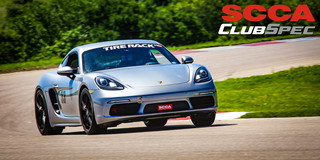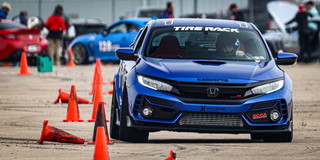
Last month, we looked at the roles of the Board of Directors (BoD), Club Racing Board (CRB) and Advisory Committees. This month, the CRB would like to address some other frequently asked questions.
One very popular question centers on who is ultimately responsible for determining class or category philosophies. And if changes are made, what factors are considered?
Ultimately it is the CRB’s responsibility to determine class or category philosophies. Small changes to a class philosophy, like picking the performance envelope, are usually determined by an Advisory Committee with CRB approval. Significant changes in class or category philosophy are normally proposed by an Advisory Committee, supplemented with member input, and then approved by the CRB. These changes are then recommended to the BoD by the CRB. The BoD then approves or denies the changes.
Several factors are considered in changing class or category philosophies. The Club has some classes, such as Formula Vee, that are steeped in tradition and tremendous discipline must be exercised so keep from disrupting their success. For other classes, the CRB will consider the class or category tradition, motorsports trends, parts obsolesce, and factors key to future success. Traditionally, the Club errs on the side of making changes in a slow and deliberate fashion to avoid disenfranchising existing competitors. We understand some people believe this philosophy has held the Club back, but we’re working to improve this facet of the CRB.
Another frequent question revolves around how the CRB ensures decisions are made without bias. The first line of defense here is simply the integrity of CRB and Committee members extensively vetted prior to appointment. Next, if a CRB or Committee member has a stake in a topic, they can voice their opinion but are not allowed to vote on the matter. Then after an Advisory Committee makes a recommendation, the CRB performs another check-and-balance review of the topic.
The final defense against bias takes place when the CRB typically “tables” an issue to gather member input before presenting to the BoD. Thus, there are ample checks and balances to ensure rules are well vetted prior to implementation.
One final “hot topic” is what happens when the CRB and a Committee see things differently on a given topic, which happens occasionally. This happens when the CRB is convinced a decision is not the best for a class or category. What transpires is an open dialogue between members of the CRB and Advisory Committees before the topic is returned to the Committee for further consideration with commentary. If the committee and the CRB are steadfast in their disagreement, it ultimately rests on the CRB to make a final decision and notify the Committee chairperson.
It’s again important to note that the CRB does its very best to serve the greater good. These committees are made up of volunteers who are passionate about the SCCA. Passion brings opinions and sometimes those opinions conflict with one another. The structure gives us opportunities to correct errors or missteps. Will every decision be popular with the membership? No, of course not. But if we follow the process, we have the greatest chance of making decisions that will keep the Club moving forward. We are committed to making the best decisions we can so that people can keep having fun with cars.










